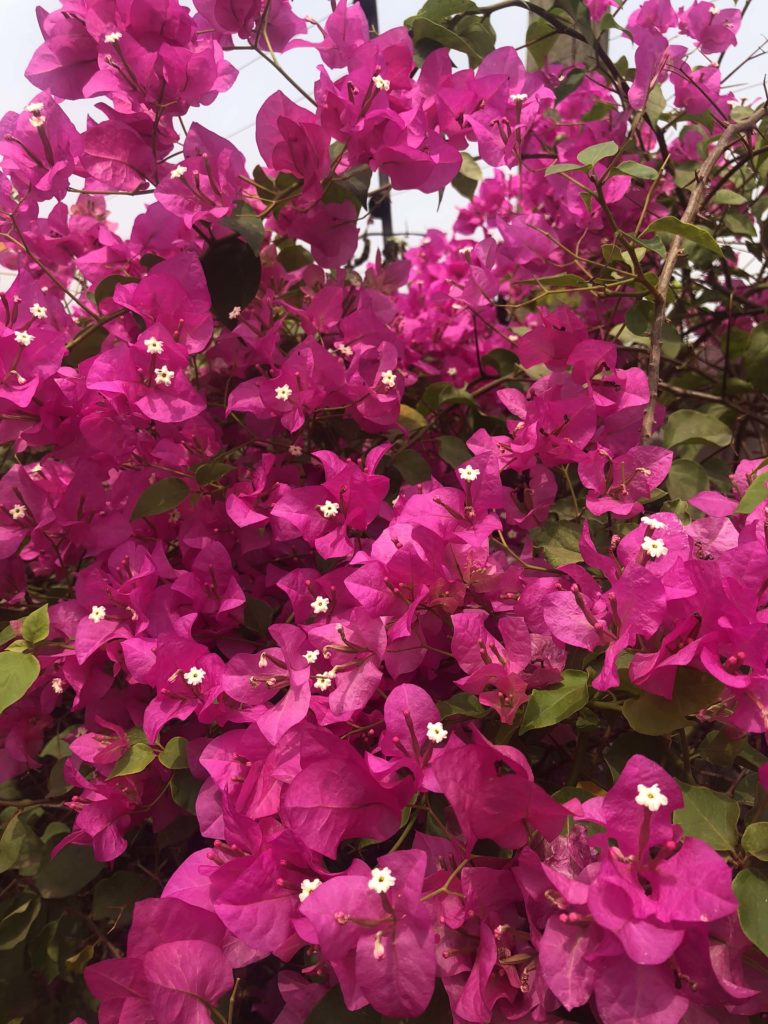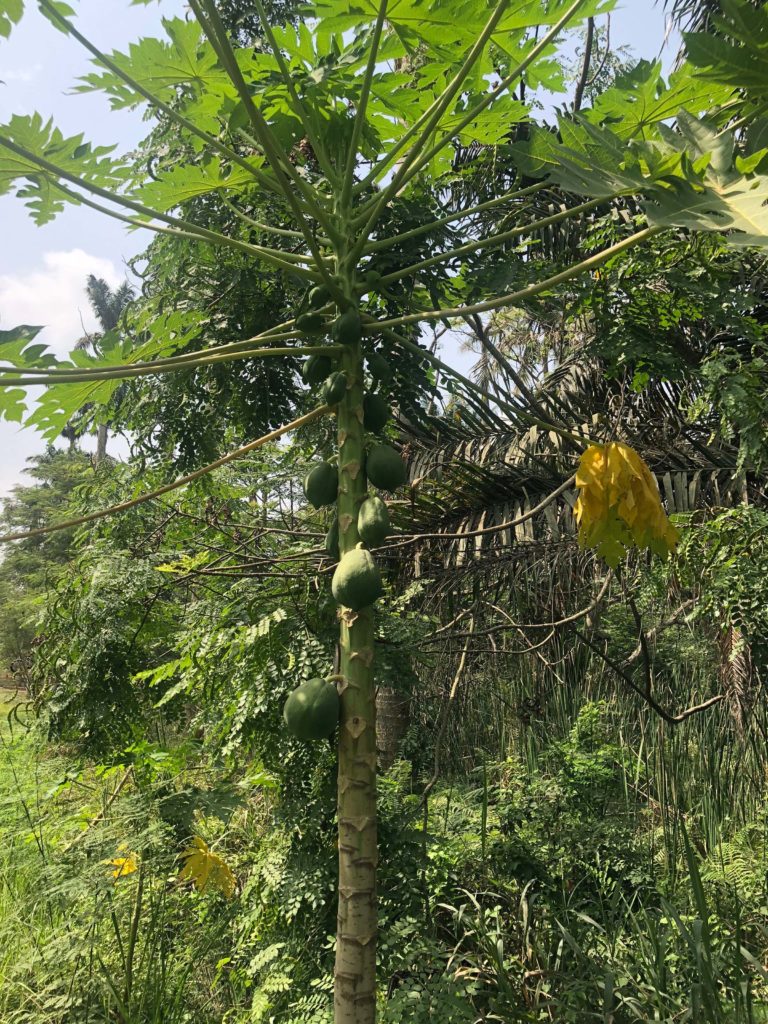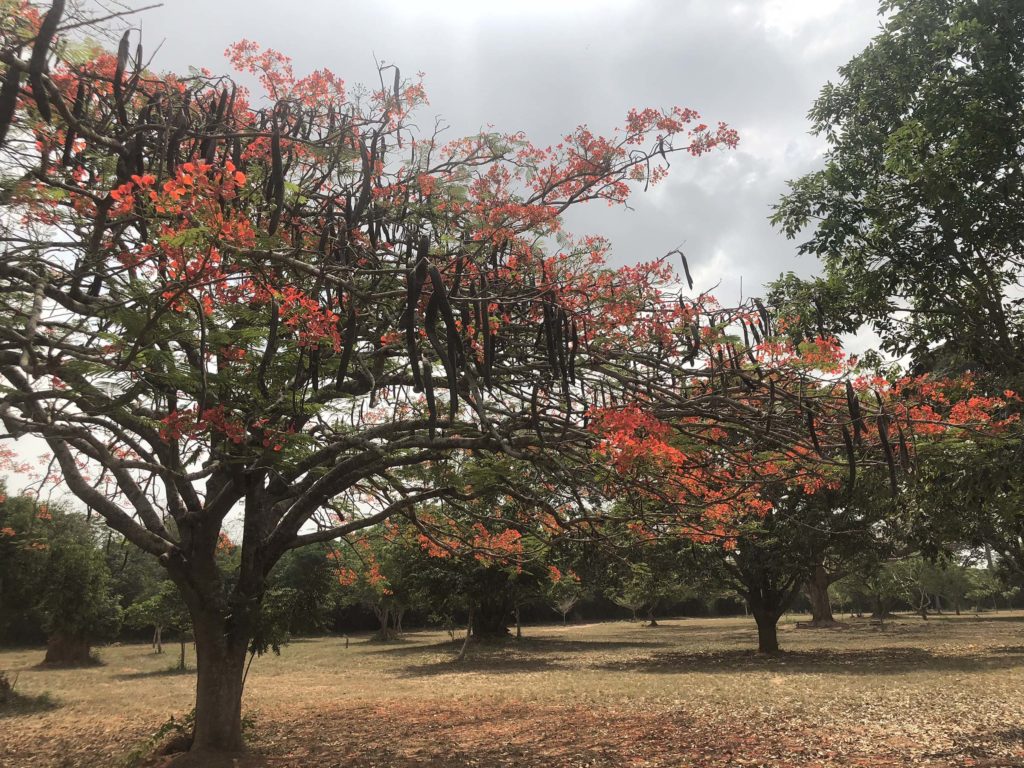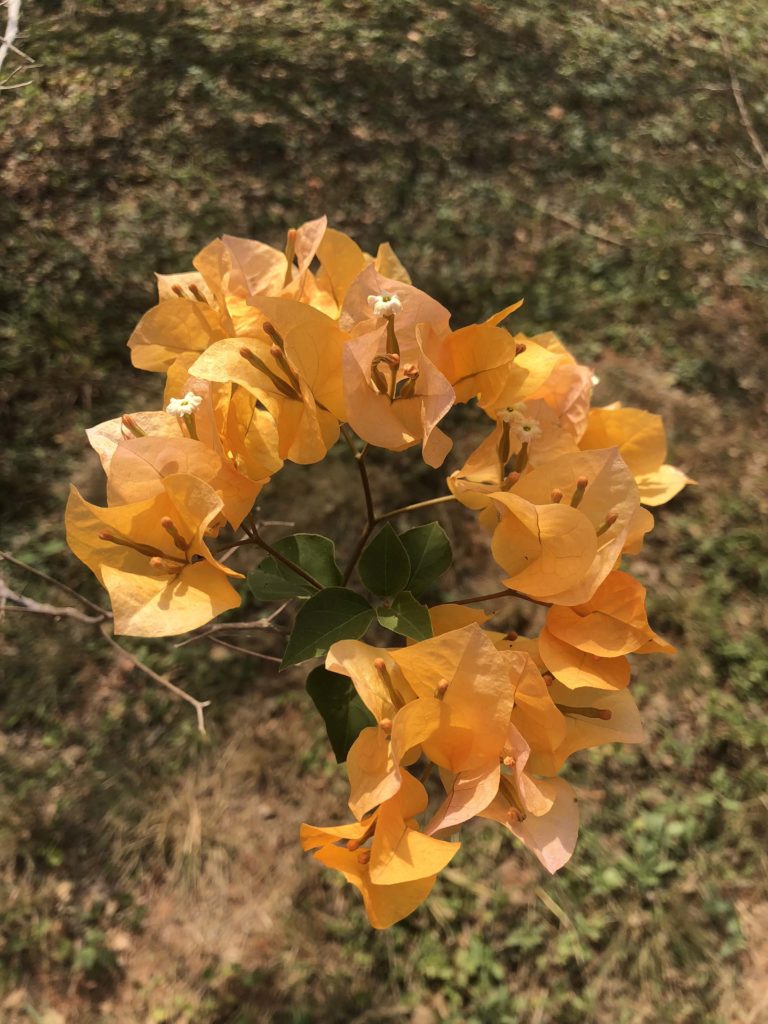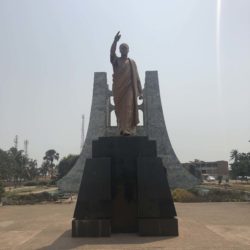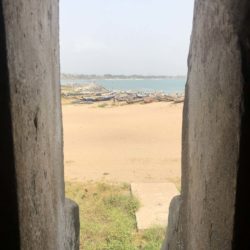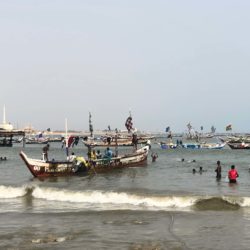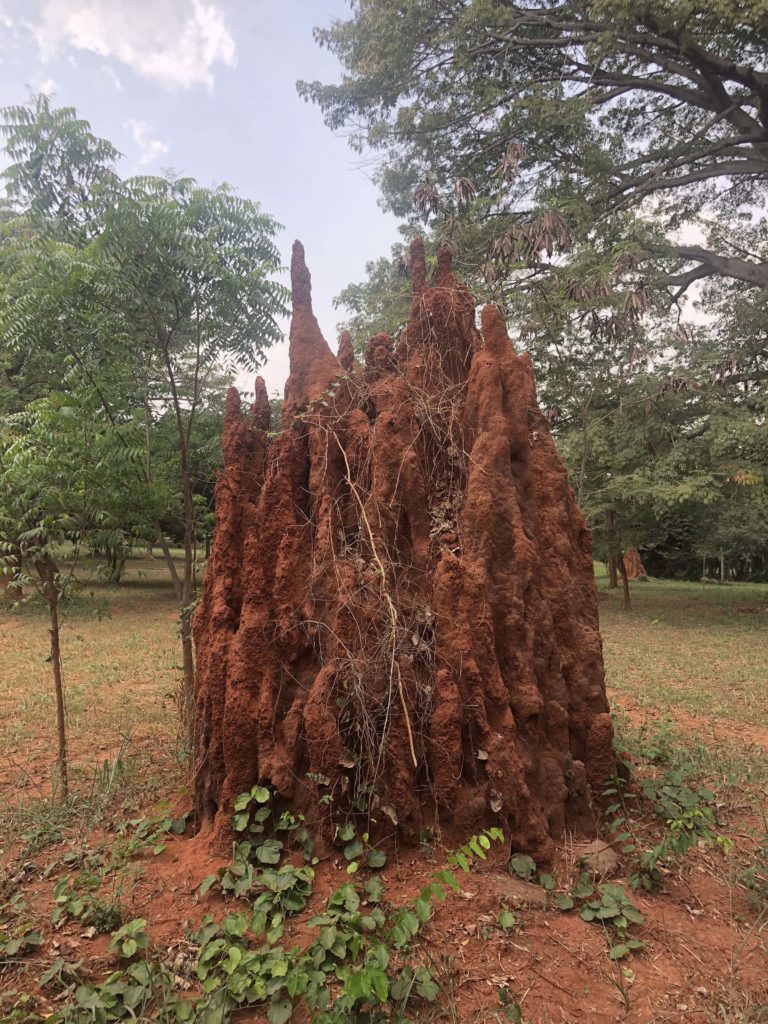
When you travel to places like Amsterdam, Munich or Prague, the tourist trail is very clearly laid out for you. Attractions are well-marked and signposts lead you from museum to monument to central square on a oft-trod route, much like Dorothy following the Yellow Brick Road all the way to the Emerald City. You can see the main sights without exerting too much effort or interacting with (m)any locals.
The same does not hold true in West Africa, where being a tourist requires you to have a self-starting attitude. Fortitude and patience are musts; all of this can lead to frustration, but with the right outlook, forging your own way through the unknown will become an adventure and not a burden. You see, it’s not that museums and monuments don’t exist in places like Accra, but rather that they lie under the radar, like items on a scavenger hunt waiting to be tracked down. You have to work a little bit to learn where these places are and how to get there. No one is going to greet you at the airport and hold your hand. This can be a little intimidating for an inexperienced traveler, but it can be done.
Gallery 1957
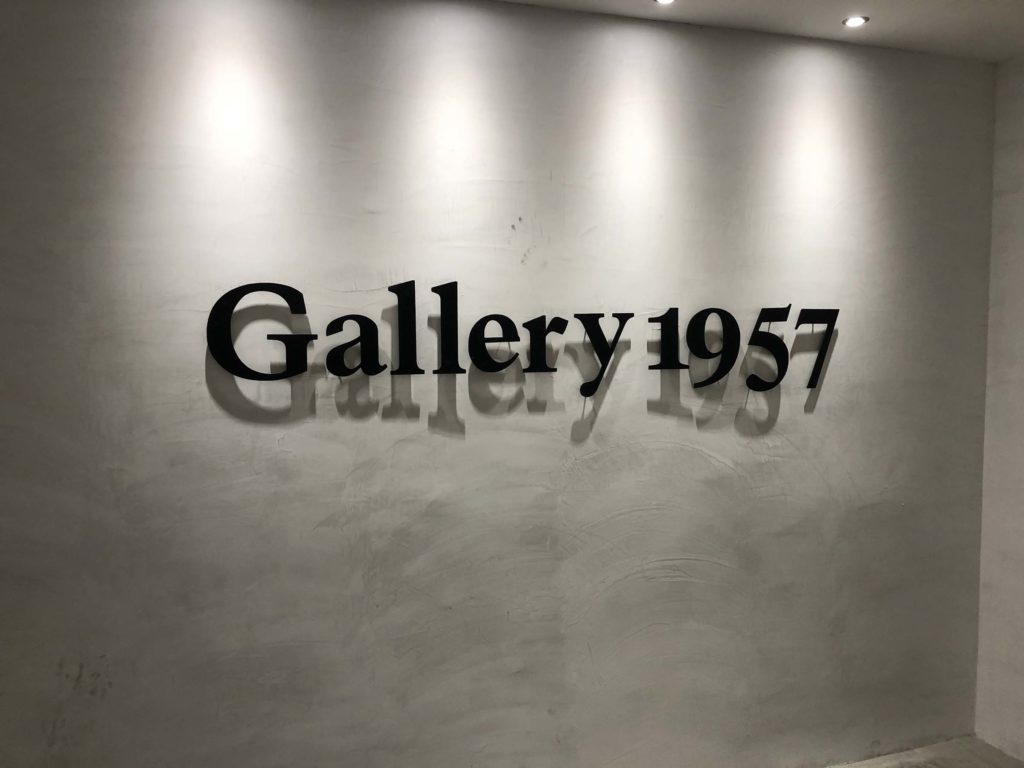
Case in point: Gallery 1957. There isn’t a contemporary art museum in Accra, right? I mean, Lonely Planet doesn’t mention one and the few resources I could find online don’t list anywhere to see Ghanaian art in the capital. Even walking around Gold Coast City, the neighborhood in which Gallery 1957 is located, you won’t find any signs or banners clueing you in that a contemporary art exhibition is right around the corner. Obviously, judging from the photo above, I was able to find this elusive collection of contemporary art, but it wouldn’t have been possible without the help from the workers at Agoo Hostel or locals I met on the street.
Gallery 1957, which opened on March 6, 2016, Ghana’s Independence Day, is located on the ground floor of the Kempinski Hotel. The Kempinski is easy to spot- it’s the largest hotel in all of Ghana (and also one of the most expensive!). This is 5-star luxury at its finest, and although I would still choose to stay at Agoo Hostel even if gifted a free stay at Kempinski, it was interesting to walk through the ornate lobby and past their fancy restaurant before making my way back to Accra’s best art exhibit.
18:20 The Collection
- Yaw Owusu
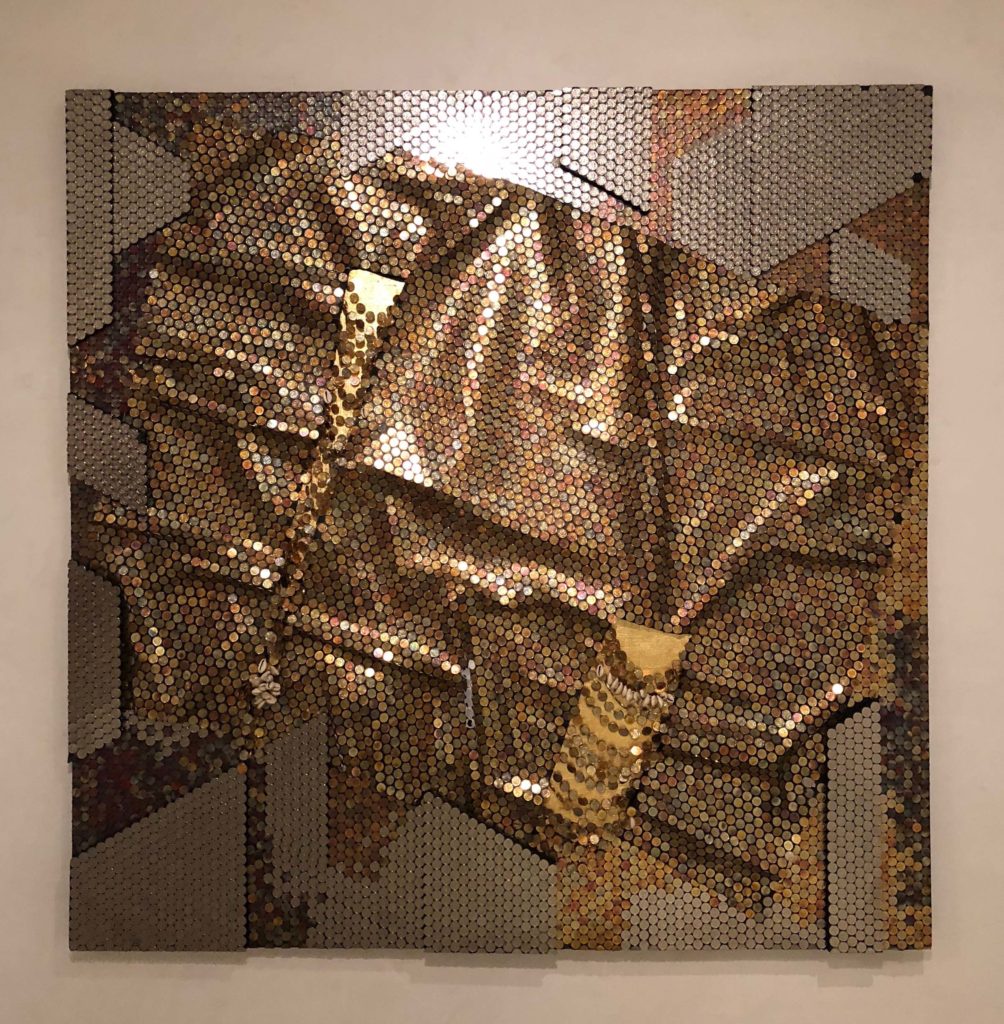
Yaw Owusu was born in Kumasi in 1992 (nothing makes me feel older than seeing people who were born in the 1990s having already accomplished so much). Owusu works primarily with pesewa, a copper coin that was introduced into Ghana’s monetary system by the government in 2007 to help fight dramatically rising inflation. The coins were a flop and today they are essentially worthless. Owusu went through the tedious and painstaking task of securing large amounts of these defunct pesewa coins from Ghanaian banks to use in his art installations.
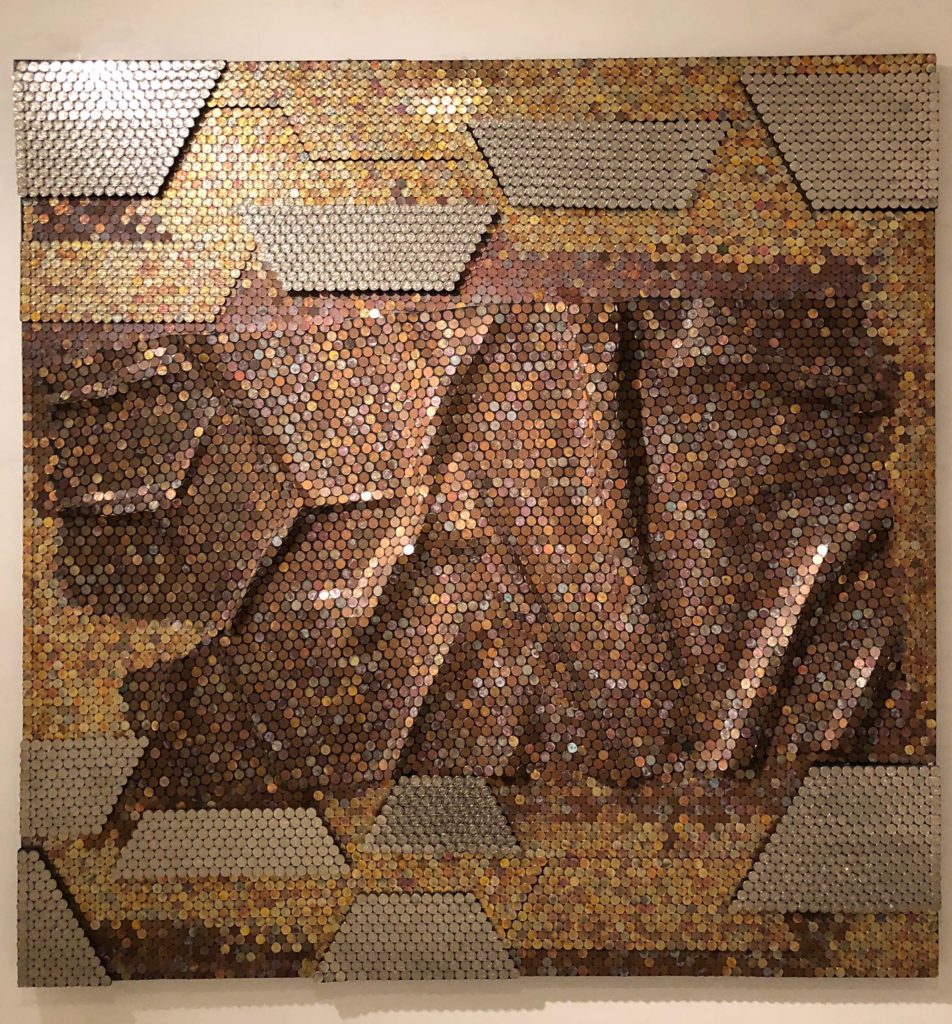
Owusu treats the coins with various natural products produced in Ghana, such as salt and vinegar, to flush out different colors and hues from the pesewas. Still, these pieces are not meant to be decorative. They illuminate the stories of Ghana’s social, political and economic current events. Ghana’s economy is a West African success story. They have prospered in the region, although, of course, not everyone has shared in the wealth. Owusu’s coins present a strong facade, just like the economy, by the wall is full of ripples and valleys, telling us that the markets are always in flux. Metal is strong; it protects us and acts like armor, but Owusu also fixes the coins to look like a shiny foil that could rip at any moment. The pesewa themselves were once stripped of their monetary value in the marketplace, revealing a robust economy that has been built on shaky ground. Ironically, now that the coins are being displayed in an art museum, they have regained some of that lost value. The coins are worth more now than they ever were on the street.
- Serge Attukwei Clottey
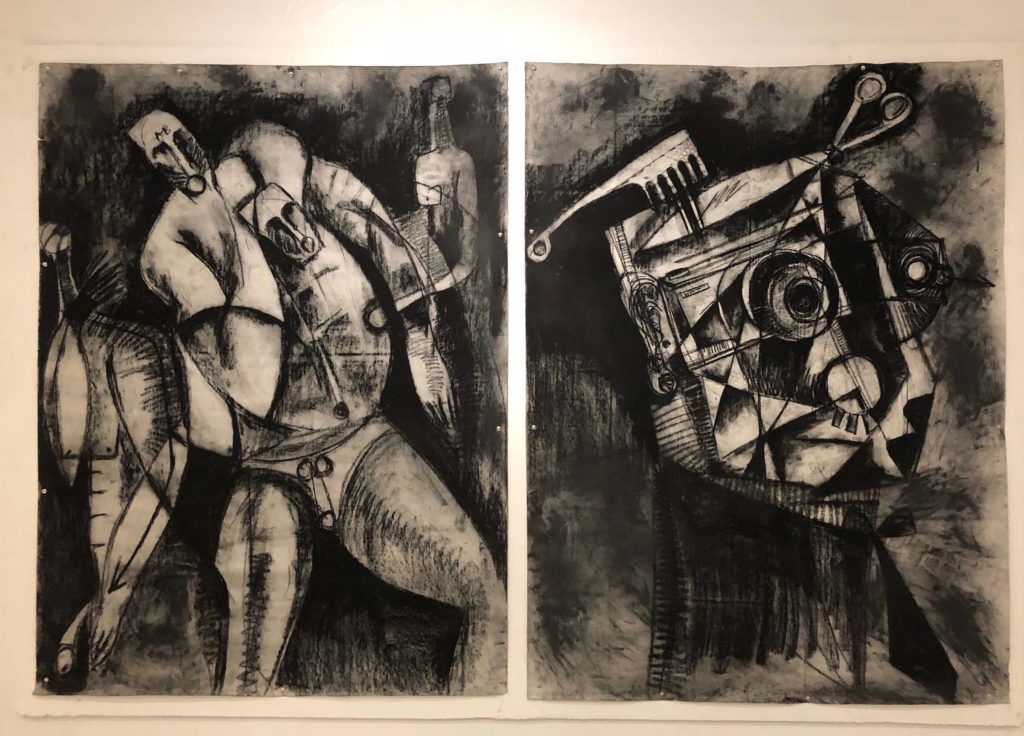
The above charcoal sketches are from a series of drawings by Serge Attukwei Clottey called “Sex and Politics.” Clottey, who was born in Accra in 1985, likes to focus on the power found in everyday objects, often assembling sculptures and installations completely from things he collected on the street. In Ghanaian culture, especially in poorer communities, nothing is trash. You can always find a secondary use from an item with enough ingenuity. An object can always be traded or reused in a new way. Goods were bartered long before they were bought and sold and that still exists in parts of Ghana today.
- Chidi Kwubiri
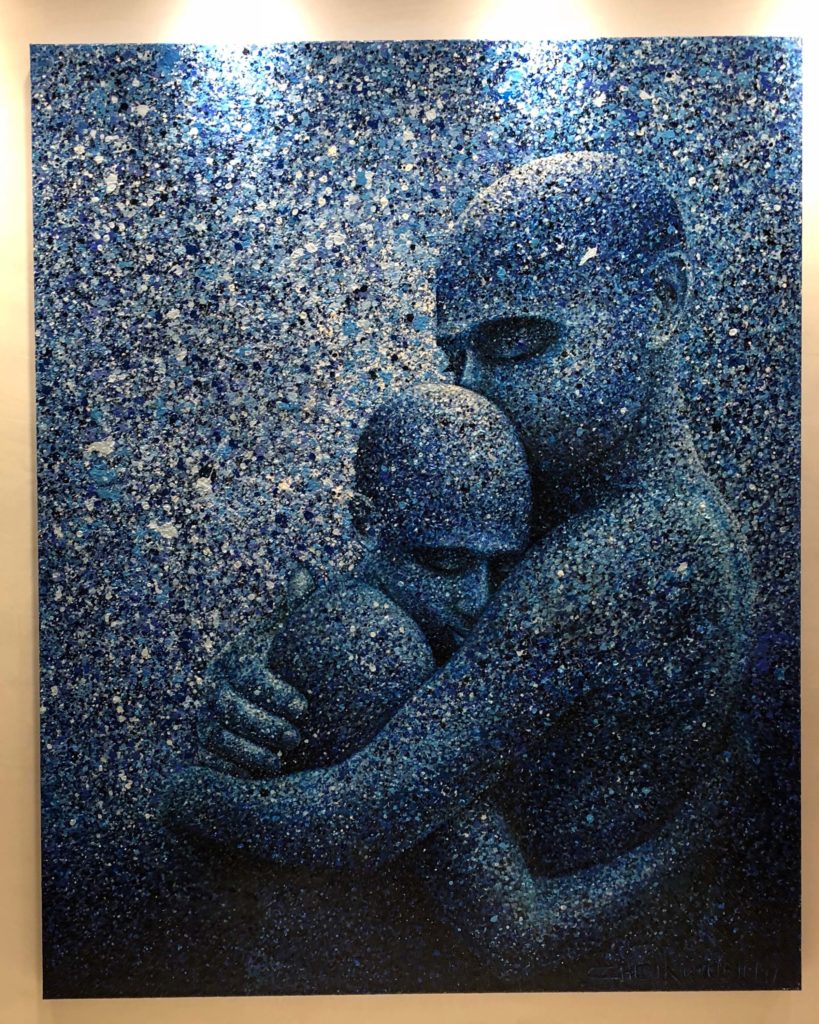
The final artist from Gallery 1957 I will discuss is bit older (born in 1966) and is from Nigeria rather than Ghana, but his work still speaks to the West African experience. In this series of paintings called “motionsEmotions,” Kwubiri uses his dot and drip technique to paint scenes where music has driven us to experience joy, melancholy, love or even rise up in protest. His paintings are meant to inspire hope as the music propels his subjects to confront social and political struggles in the region.
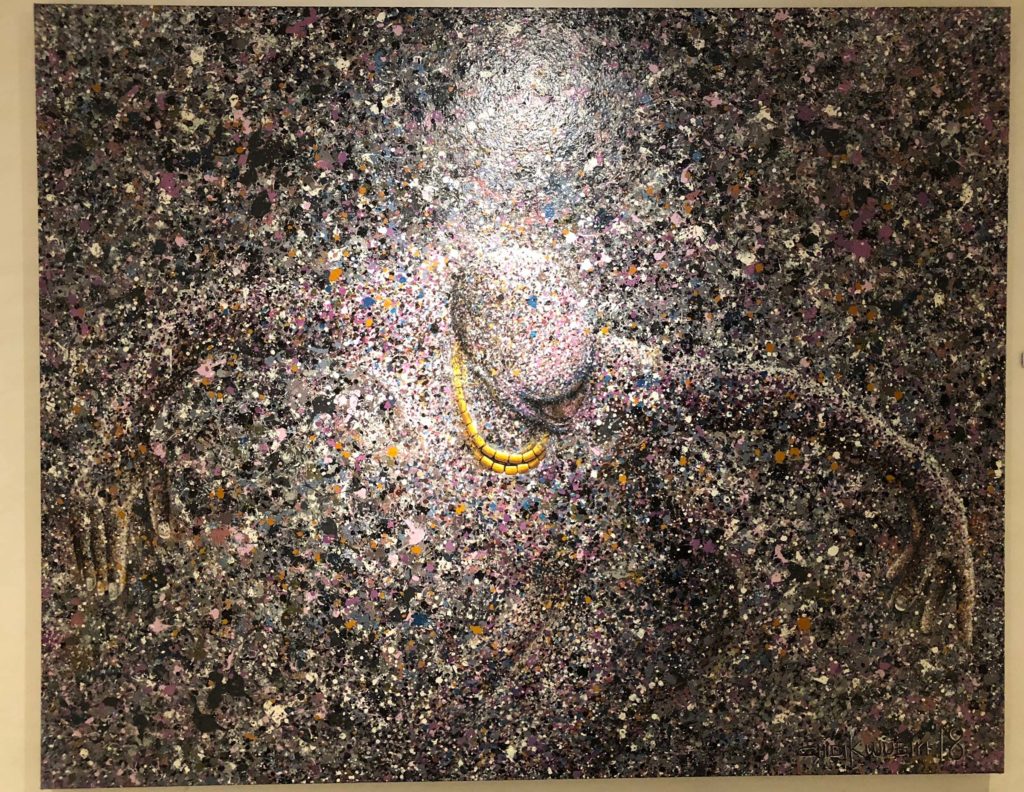
Kwubiri’s works also cross generational lines. The subjects embrace traditional African dance, the afrobeats of Fela Kuti and modern hip-hop moves. Music and dance, perhaps more than any other genre of art, have always been intrinsically entwined with African culture. Now they have fused with the visual arts as well.
I was blown away by Gallery 1957 (a second exhibition space has since opened in Accra) and a visit should be a must for anyone visiting the Ghanaian capital, granted you can find it first!
Centre for National Culture
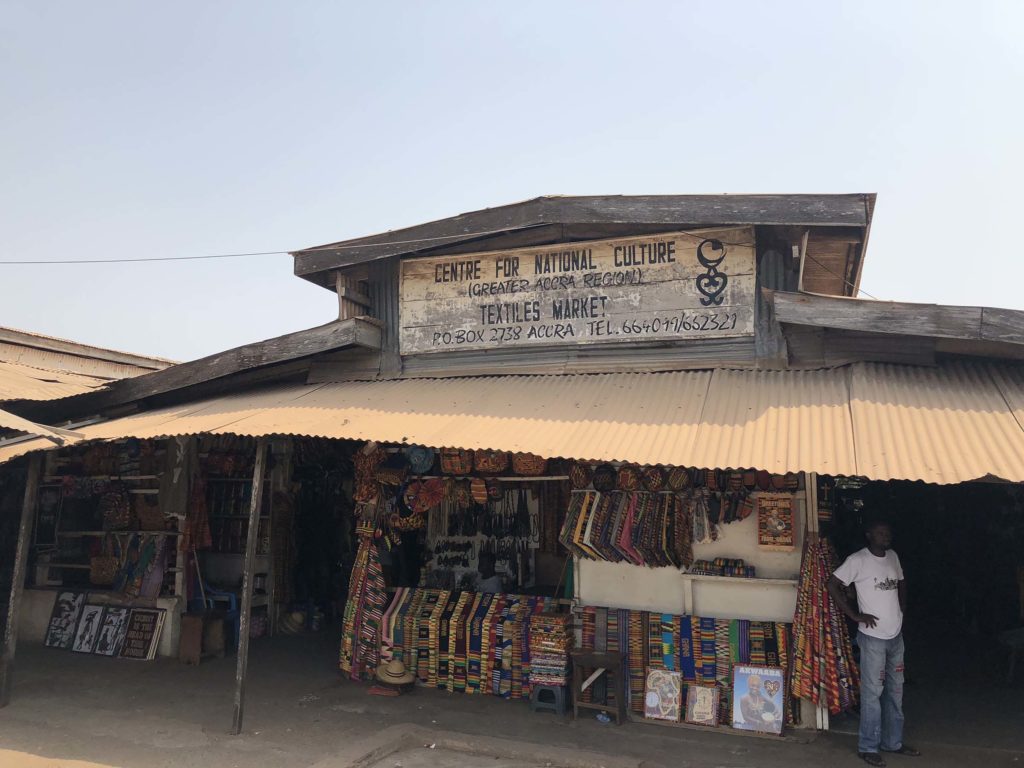
The Centre for National Culture, also known as the Arts Centre, has the largest centralized collection of Ghanaian fabric, paintings, wood carvings, beads, jewelry and various other souvenirs in Accra. Prices are definitely inflated for tourists and although bargaining is a part of shopping at any Ghanaian market, the initial bidding starts out so high that you won’t escape without paying an arm and a leg.
There was one painting I really liked depicting the hectic traffic in Accra. Perhaps I appeared over-eager, but the artist told me he wanted $75 for it. My jaw must have dropped because he quickly lowered the price $50, a sum I still wouldn’t pay. Back at the hostel, one of the workers laughed and showed me where I could buy similar paintings, 3 for $20.
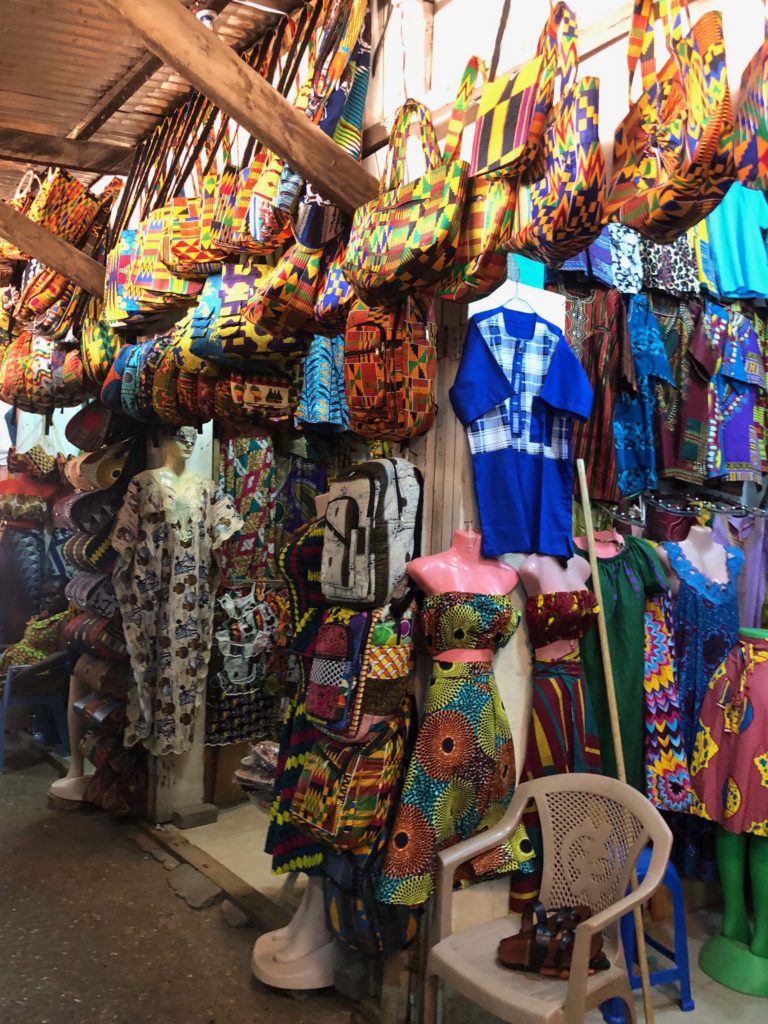
Still, if you put on a hardened, disinterested face, the centre can be an interesting place to walk around. As soon as you make eye contact with someone, just be prepared for a hard sell. Be polite, but firm if you don’t want to buy. If you feel like purchasing, make sure you haggle down to a fair price. I never mind paying a “tourist tax” at a market, there’s a difference between a little extra and getting ripped off.
Makola Market
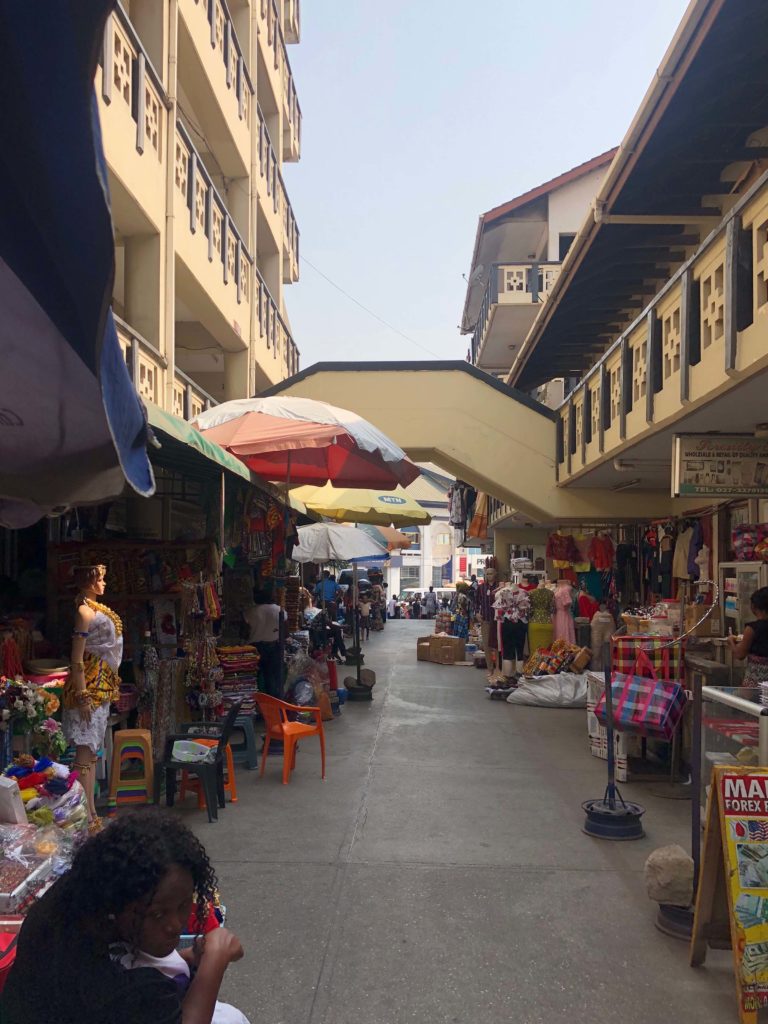
Now for the real deal. Makola is Accra’s largest and busiest market and the place where many Ghanaian people come to shop. You can find anything at the market, which is divided into different departments spread out over several buildings in the business district. The market originally opened in 1924 when the Gold Coast was still a British Crown Colony. During the riots leading up to independence, European-owned stalls in the market were looted and destroyed. In the 1970s, at the height of the military rule of President Jerry Rawlings, a large portion of the market was destroyed and a parking lot, today known as Rawlings Park, was created. Rawlings accused the women who ran the market of shorting the supply chain of certain popular items in order to inflate prices. (Whether this is true or not is up for debate.) He blamed the women for Ghana’s economic woes and punished them by paving their paradise and putting up a parking lot. Today food vendors line the perimeter of the car park and it’s a great place to try some authentic Ghanaian street food.
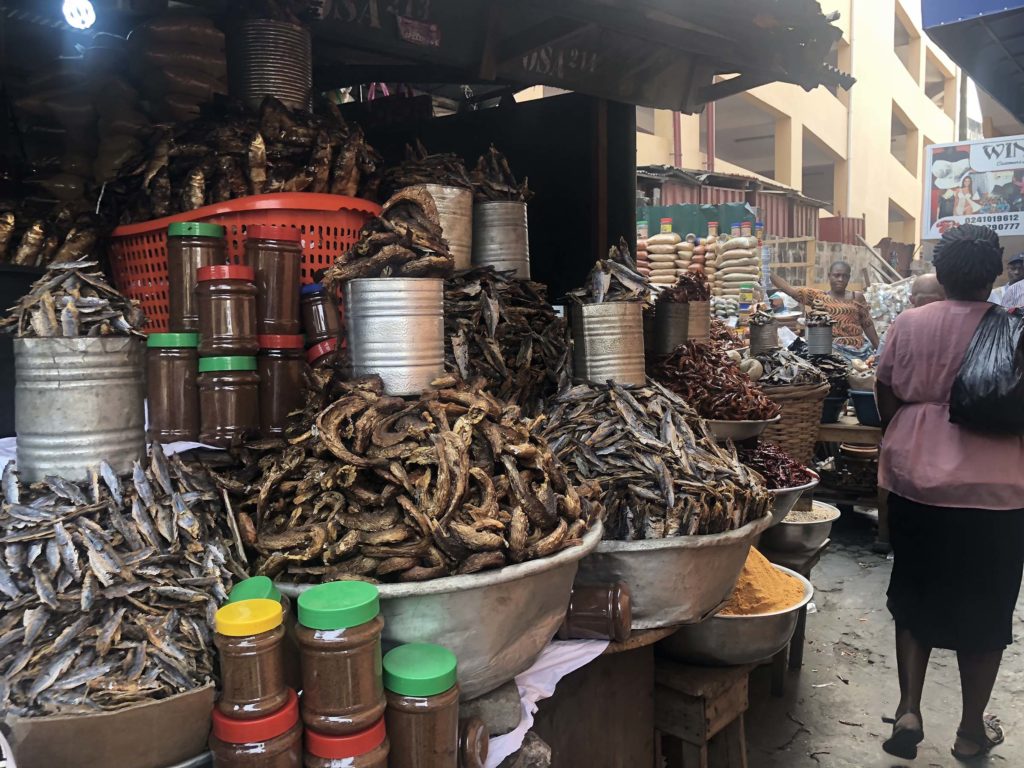
When I say you can find anything at Makola, I mean anything. You can buy car parts, clothing, fabric, shoes, jewelry, pots and pans, books, electronics, phones, produce, meat, spices- you name it. Do note that many of the women working the market do not want their photos taken. Always ask before snapping a pic. Your chances of taking a photo will greatly increase if you stop and make time for some conversation, or better yet, if you buy something first.
National Theatre of Ghana
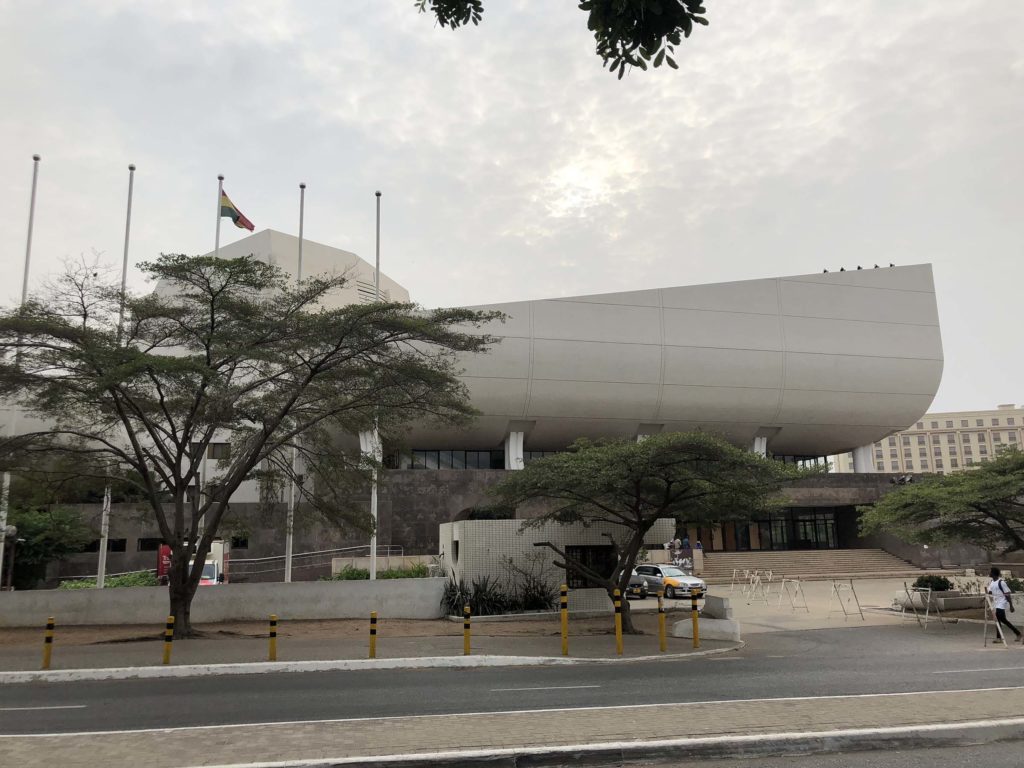
The National Theatre has the coolest modern architecture in all of Accra. From afar, the building looks like a ship, sailing off into the sunset. After Ghana declared independence in 1957, the National Theatre Movement (NTM) was established to help crystallize a new identity for Ghanaian artistic expression. Different theatre traditions existed in Ghana’s various ethnic groups for millennia, but President Kwame Nkrumah wanted a unified Ghana, and that meant culturally as well as politically.
This current building that houses the three branches of the National Theatre wasn’t completed until 1992. The National Dance Company, National Symphony Orchestra and National Theatre Players all have stages and exhibition halls within the structure.
I attempted to go inside, but the custodians told me the theater was closed for three days for its annual carpet cleaning. I sat and chatted with them for quite a while, telling them that I loved going to the theater in New York and that I was very jealous of the National Theatre building here in Accra. They told me to return to Ghana anytime and they would happily show me around once the carpets had been cleaned!
Legon Botanical Gardens
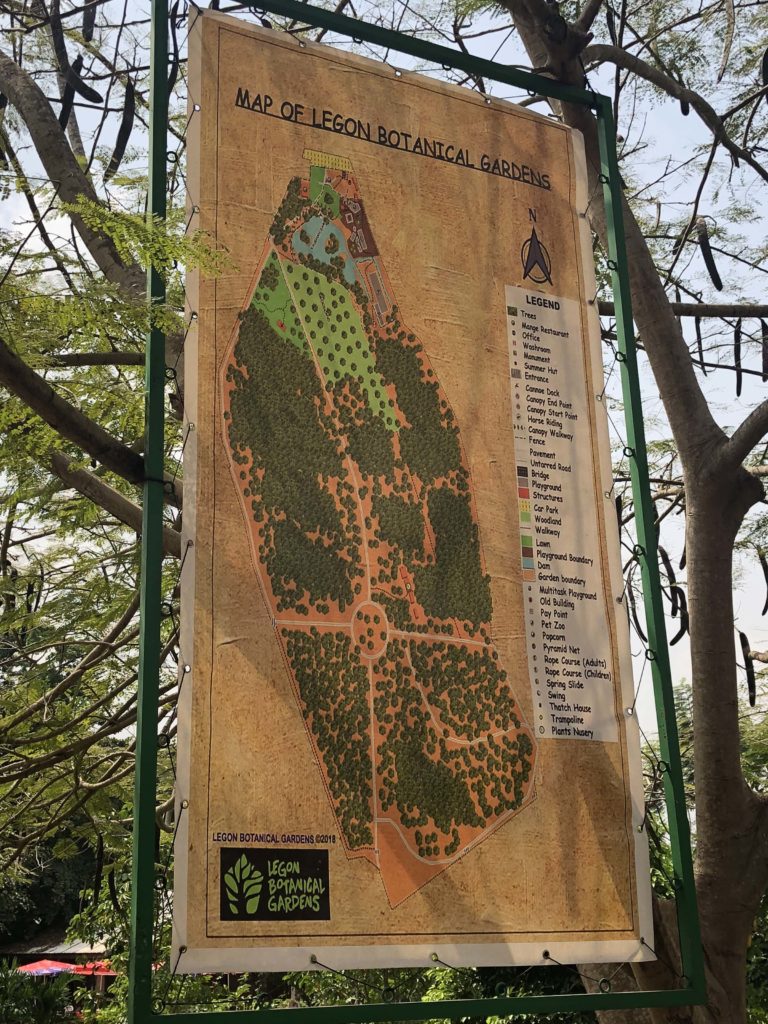
Located on the University of Ghana campus in a northern suburb of the capital, Legon Botanical Gardens is an oasis of calm in the city and one best reached by Uber or taxi. I split the transportation cost with two new friends from Agoo and the three of us made an afternoon of exploring the park and dining at one of the nearby restaurants. Accra has a great energy, but if you’re ever feeling overwhelmed by its 2.5 million inhabitants hurrying about or the genuinely terrible traffic, spend some quiet time in the gardens and refresh, recharge and refuel.
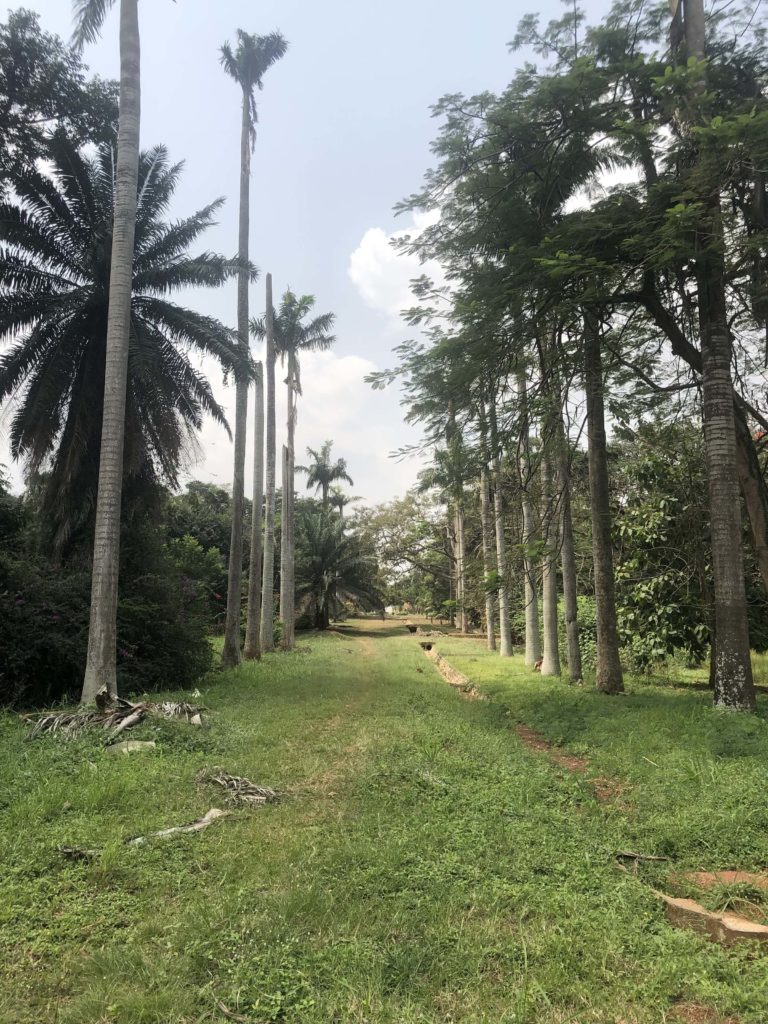
Founded in 1948 and opened to the public two years later, the botanical gardens isn’t just one of the oldest green spaces in Accra, it’s one of the only parks in the entire city. (Local government has been promising more green spaces in the downtown area for years, but little progress has been made.) In 2017, a new family adventure park opened on the grounds. There’s a high-flying ropes course, a canopy walk and kayaking on a lake created by a nearby dam. The three of us skipped all that and headed into the gardens proper where a greater surprise awaited us:
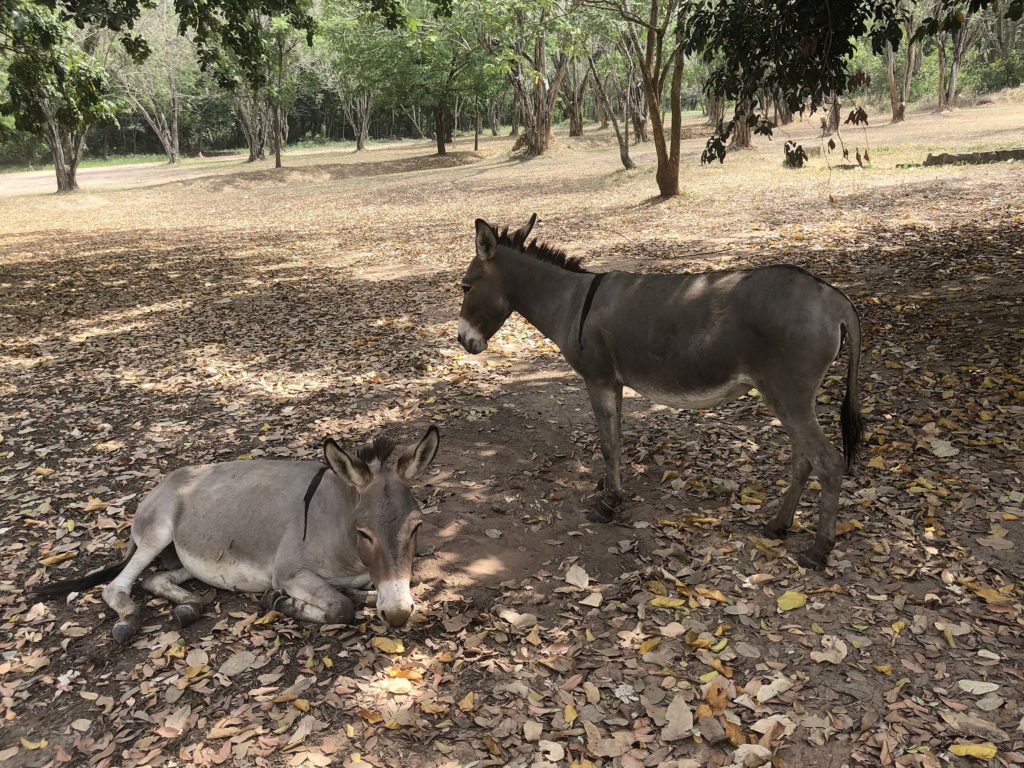
Yes, a herd of donkeys have free range to roam the park and they might just follow you around for a bit. (My dad tells me I always wanted a donkey for a pet when I was younger; who knew I would have to go halfway around the world to get my wish!)
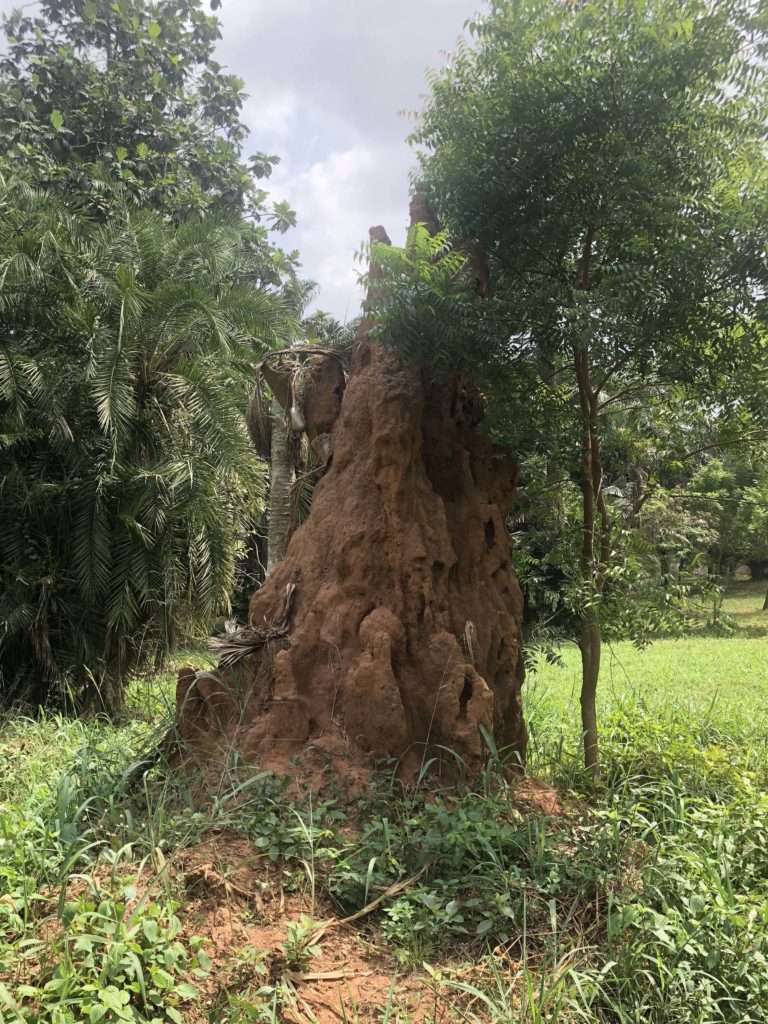
The other animals that inhabit the garden might not be as cuddly as a donkey, but they sure build some cool looking abodes. This species of termite, native to Africa and Australia, doesn’t burrow in wood like their North American counterparts, but rather they erect giant pillars of red clay that shoot up out of the ground like some prop from a 1950s Martian movie.
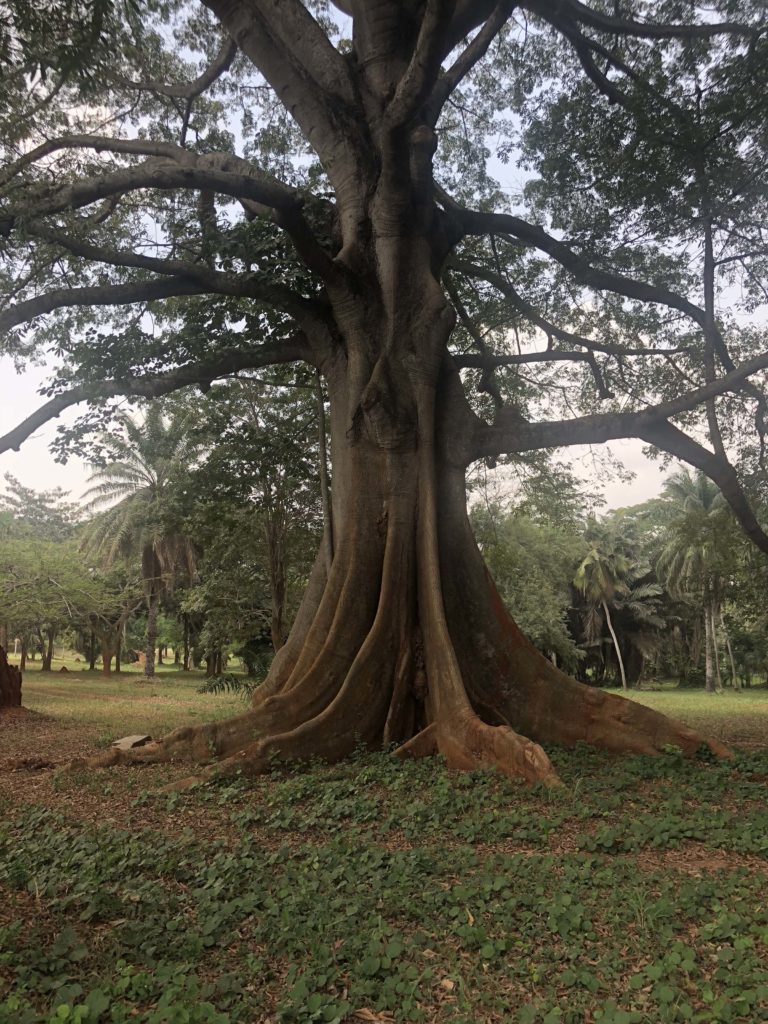
The tree pictured above is centuries old and once provided shelter for the indigenous people who lived here. A home would be built around the base of the tree, with the large overgrown roots acting as the walls of the various rooms of the house. Because of mass deforestation, these trees are now protected by the government.
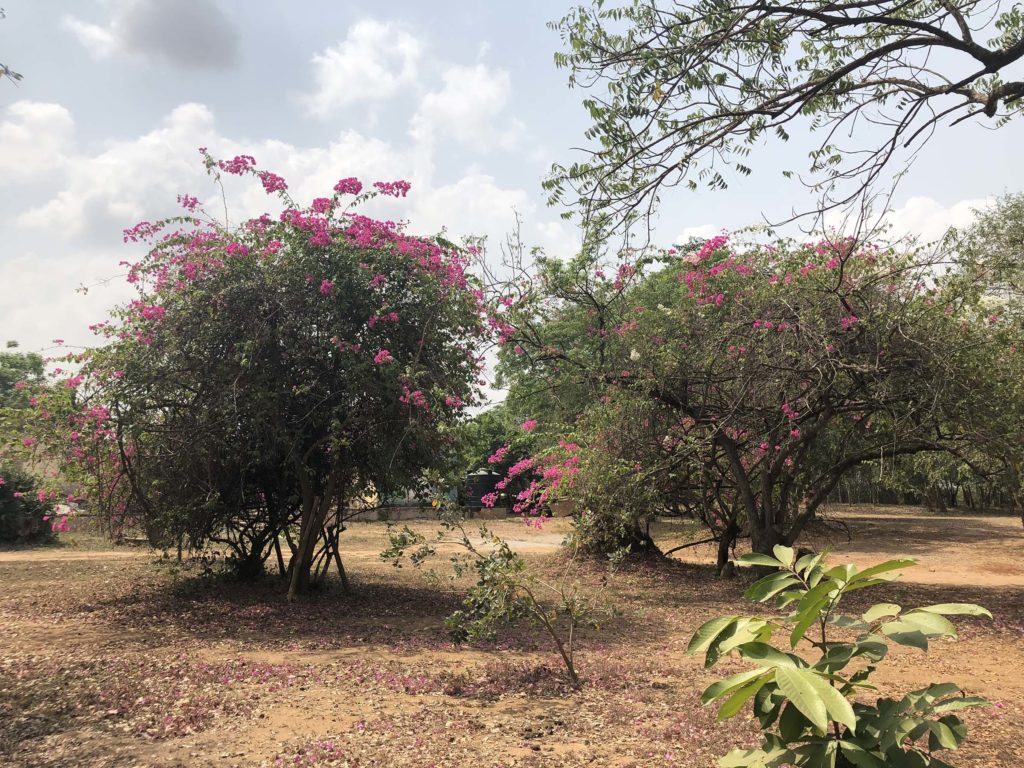
As I wrap up this colorful journey through Accra’s artistic, cultural and natural worlds, I will leave you with some pictures of the beautiful flora native to West Africa. When I think of all the images the American media likes to flood us with concerning Africa (Disease! Famine! War!), I hope to combat that with some photos of Africa’s colorful beauty and natural wonders.
